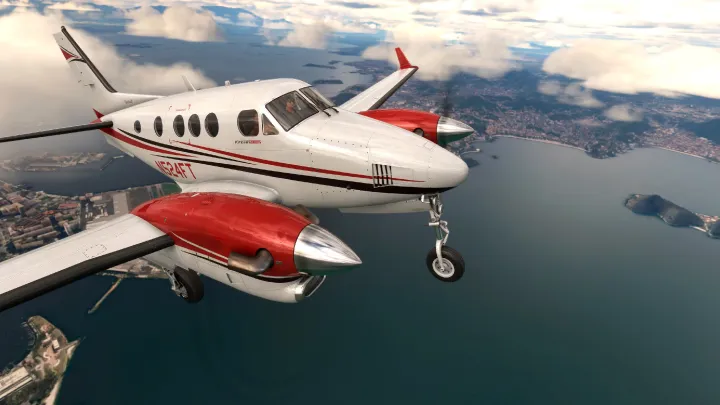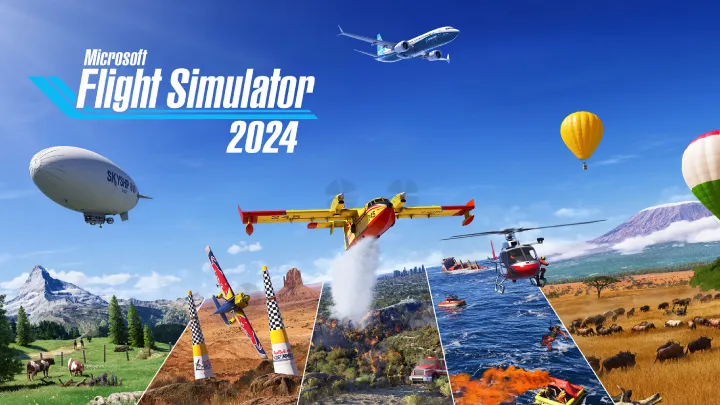Microsoft Flight Simulator 2024 is the latest edition of the acclaimed flight simulation series, offering realistic aviation experiences, stunning visuals, and accurate world mapping. Players can pilot a wide range of aircraft, from small private planes to commercial airliners, and explore detailed global environments. Mastering the simulator requires knowledge of flight mechanics, navigation, aircraft systems, weather management, and airport operations.
This guide provides a complete walkthrough for beginners and advanced pilots, covering aircraft selection, flight planning, takeoff and landing procedures, navigation, weather adaptation, and advanced simulation techniques.
By following this guide, players can enhance piloting skills, improve flight efficiency, and fully enjoy the immersive experience of Microsoft Flight Simulator 2024.
Section 1 Understanding Core Flight Mechanics

Before taking to the skies, it is crucial to understand basic flight mechanics. Microsoft Flight Simulator 2024 simulates real-world aerodynamics, including lift, drag, thrust, and weight.
Players must learn how control surfaces such as ailerons, rudder, and elevators affect aircraft movement. Understanding throttle, pitch, and yaw control is essential for stable flight.
Familiarity with these core mechanics allows pilots to manage takeoff, cruising, and landing effectively while responding to changing conditions during flight.
Section 2 How to Choose the Right Aircraft
Microsoft Flight Simulator 2024 offers a wide variety of aircraft types, each with unique handling characteristics and system complexity.
Beginners may start with light aircraft that are easier to control, while advanced pilots can explore jets and airliners with sophisticated avionics.
Selecting the right aircraft based on skill level, flight objectives, and desired challenge is essential to ensure a comfortable and effective simulation experience.
Section 3 How to Plan Flights and Navigate
Flight planning is a critical component of realistic aviation. Pilots must plan routes, fuel requirements, altitudes, and airways before departure.
The simulator includes GPS, navigation aids, and air traffic control guidance to assist pilots. Learning to read flight charts and understand airspace rules ensures safe and accurate navigation.
Effective flight planning reduces errors, prevents mid-flight issues, and allows pilots to focus on executing smooth and efficient flights.
Section 4 How to Take Off and Land Successfully
Takeoff and landing are the most challenging aspects of flight for many pilots. Mastering these procedures ensures safe departures and arrivals.
Pilots should monitor speed, flap settings, wind conditions, and runway alignment during takeoff. Landing requires approach planning, flare technique, and throttle control to touch down smoothly.
Practicing these procedures in different aircraft and under varying conditions builds confidence and improves overall flight proficiency.
Section 5 How to Manage Aircraft Systems and Instruments
Aircraft systems such as engines, electrical, hydraulic, and avionics are simulated in detail. Proper management ensures operational efficiency and safety.
Pilots must monitor engine performance, fuel levels, and instrument readings to detect issues early. Understanding autopilot, navigation systems, and communications enhances long-distance flight control.
Mastering system management allows pilots to focus on flying while effectively using automated tools for efficiency and accuracy.
Section 6 How to Adapt to Weather Conditions

Weather is a dynamic and critical factor in flight simulation. Pilots encounter rain, wind, turbulence, clouds, and visibility changes.
Learning to read weather reports, adjust flight plans, and modify aircraft control according to conditions is essential. Techniques such as crosswind landing and instrument approaches improve safety.
Adaptation to weather enhances realism and allows pilots to handle unexpected challenges while maintaining control and flight efficiency.
Section 7 How to Communicate with Air Traffic Control
Communication with air traffic control (ATC) ensures coordination and safety, especially in busy airspaces.
Pilots must learn standard phraseology, radio procedures, and response timing. Following ATC instructions reduces conflict and provides guidance for navigation, takeoff, and landing.
Effective communication enhances the immersive experience and ensures compliance with realistic aviation protocols.
Section 8 How to Practice Emergency Procedures
Emergencies such as engine failures, system malfunctions, and severe weather can occur during flights. Pilots must know how to respond.
Practicing simulated emergency scenarios helps develop decision-making skills, procedural knowledge, and calmness under pressure. Techniques include emergency landings, engine restart, and diversion planning.
Preparedness for emergencies builds confidence and ensures pilots can handle unexpected situations safely.
Section 9 How to Improve Precision and Flight Efficiency
Precision flying involves maintaining altitude, heading, speed, and approach accuracy. Efficient flight reduces fuel consumption and enhances realism.
Pilots should practice steady climbs, level cruising, smooth turns, and accurate approaches. Monitoring instruments and using autopilot effectively ensures consistent performance.
Combining precision with strategic planning allows pilots to complete flights smoothly and achieve higher realism and scores in challenges.
Section 10 How to Achieve Mastery and Long-Term Success
Mastery of Microsoft Flight Simulator 2024 requires ongoing practice, learning aircraft systems, improving navigation skills, and adapting to complex scenarios.
Exploring diverse aircraft, varied routes, and challenging weather conditions provides valuable experience. Joining online communities, participating in challenges, and analyzing performance improve expertise.
Long-term success comes from balancing skill development, procedural knowledge, and enjoyment of immersive aviation experiences offered by the simulator.
Conclusion
Microsoft Flight Simulator 2024 delivers an unparalleled aviation simulation experience, combining realistic physics, aircraft systems, navigation, and weather management. Mastering control, flight planning, takeoff, landing, and emergency procedures ensures safe and efficient flights.
Following this guide allows pilots to improve skills, handle complex scenarios, and fully enjoy the immersive and educational experience of Microsoft Flight Simulator 2024.
Summary
A complete guide to mastering aircraft control, flight planning, navigation, weather, and emergencies in Microsoft Flight Simulator 2024 for realistic piloting success.

















